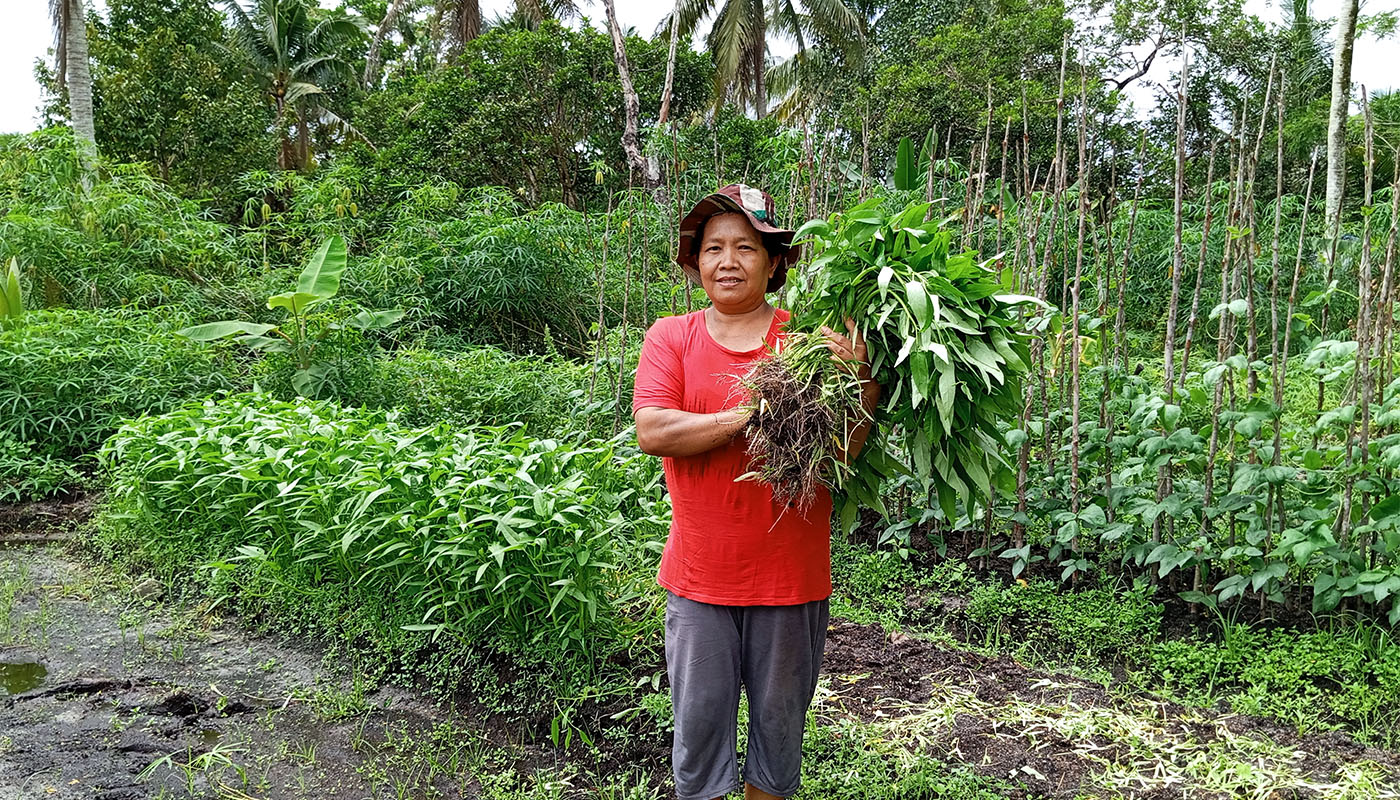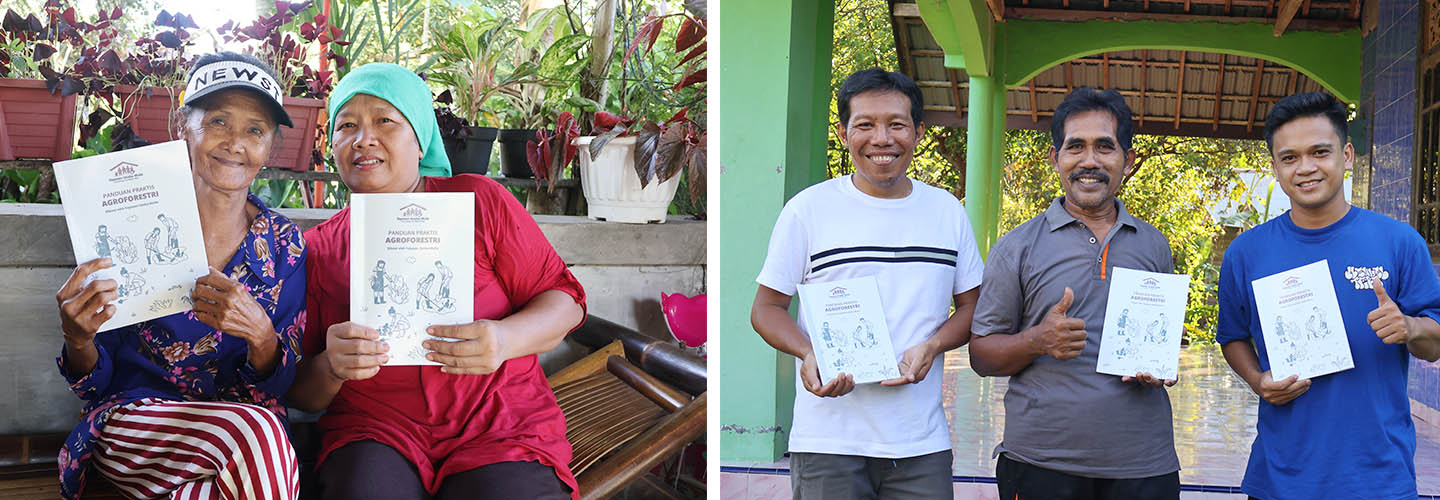From Trial to Transformation: The Success Story of YUM’s Agroforestry Pilot
- Sharing :
- Tweet

In Central Kalimantan, where climate change increasingly threatens local livelihoods, a quiet transformation is taking place. Since 2018, Yayasan Usaha Mulia (YUM) has been developing a sustainable agroforestry model tailored to the region’s environmental and socio-economic realities. By 2024, with support from SDIA, Susila Dharma Germany, and BMZ, the project scaled up from a trial plot to a full pilot involving ten smallholder farmers.

This hands-on phase tested the transition from monoculture farming to an organic, diverse agroforestry system. Farmers received training in soil fertility, organic inputs, financial planning, and sustainable plot design. Their land was transformed through practices such as mulching, the application of wood vinegar, and the use of biochar—methods aimed at restoring soil health and reducing dependence on chemical inputs.
Together with the farmers, YUM co-developed a practical layout tailored for smallholder conditions. At the center was a 350-square-meter core unit that combined a range of cash crops with short-term fruit trees, providing quick yields and organic matter to enrich the soil. This was complemented by an adjacent 1,650-square-meter area designated for 40 to 50 medium- and long-term fruit trees, offering a pathway to long-term productivity and income stability.

The crops cultivated within these agroforestry plots reflected both nutritional value and market potential. Farmers grew corn, runner beans, green beans, and squash, as well as cucumber and gambas (a type of luffa). Leafy greens such as water spinach, spinach, and spring onions were also integrated into the system, ensuring dietary diversity and income opportunities through surplus sales.
This model proved not only viable but empowering. Several farmers observed improved food quality for their families and began generating supplemental income from their harvests. Encouragingly, four participants stepped forward to become community ambassadors—local champions committed to guiding others in adopting the method.
“After failures due to waterlogged land, I joined the project out of curiosity. With YUM’s guidance—like building raised beds—I’ve turned my unused land into something productive.” – mr. G, 37.

Beyond the farm, YUM launched a climate change awareness campaign led by 25 trained women leaders. Through 118 workshops conducted across villages and schools, the campaign reached over 2,000 participants. Their message was clear and accessible: climate change is real and already impacting daily life; it threatens food security, human health, and local weather patterns; and simple, community-driven solutions like agroforestry and recycling can help reduce the risks.
Initially, 86 percent of workshop participants had never heard the term “climate change.” By the end, 99.8 percent understood its causes, and over 96 percent were aware of practical steps they could take to mitigate its impact.
“At first, people were skeptical. But once we started, they became curious and asked thoughtful questions. In our village, people now rarely burn their land, because they understand the effects.” – Community facilitator

To further scale the initiative, YUM conducted a regional survey with over 300 farmers to better understand current practices and the potential for wider adoption. The results showed that the vast majority—93 percent—relied on vegetable cash crops as their main livelihood.
However, 86 percent used chemical fertilizers and pesticides, with 52 percent also using herbicides. Most sold their produce to middlemen at just one-third of market value. Despite these challenges, there was strong interest in sustainable alternatives: 65 percent of respondents, especially younger farmers, expressed a desire to learn more about agroforestry.

Drawing on the data and field experience, YUM published a farmer-friendly manual designed to support broader adoption. Simple and visual in its layout, the manual includes QR codes linking to tutorial videos hosted on YUM’s YouTube channel. Two hundred copies are being distributed to interested farmers across the region, equipping them with the tools needed to start their own agroforestry journey.
Agroforestry in Central Kalimantan is more than an environmental intervention—it is a community-led movement toward climate resilience, food security, and economic empowerment. With farmers and leaders at the heart of the change, the roots of this transformation are growing stronger every day.

- Sharing :
- Tweet
